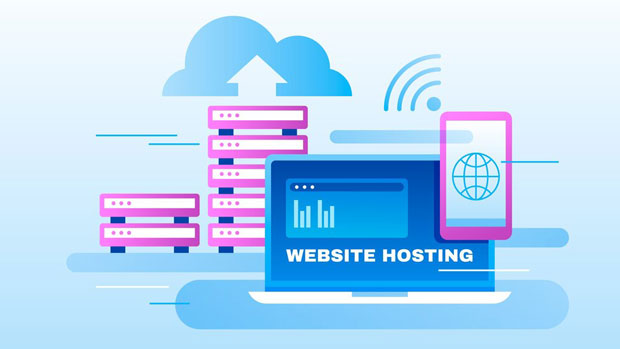In today’s digital age, the concept of proxies has become a vital part of internet infrastructure. With the increasing demand for anonymity, security, and optimized browsing, proxies are widely used across various industries. A commonly raised question is whether proxy servers can handle high-concurrent connections efficiently. High concurrency refers to the ability of a system to handle multiple simultaneous connections without a significant drop in performance. In this article, we will explore the capabilities of proxy servers, particularly focusing on whether proxy proxy proxy solutions can support high concurrent connections, analyzing their architecture, limitations, and strategies for performance optimization. Understanding Proxy Servers and High-Concurrency ConnectionsBefore diving into the specifics of whether proxy proxy proxy solutions support high concurrent connections, it’s essential to understand what proxy servers are and what high-concurrency connections entail.A proxy server is an intermediary server that sits between a client and the destination server. It acts as a gateway through which client requests are routed to servers, making it essential for tasks such as load balancing, security, and masking IP addresses. Proxies help increase privacy, improve speed, and bypass geographical restrictions, among other benefits.High-concurrency connections refer to the ability of a system, in this case, a proxy server, to manage multiple requests simultaneously without compromising performance. This involves managing multiple threads or connections in parallel, which is a critical component in today’s fast-paced and resource-heavy internet environments.The Challenges of Handling High Concurrent ConnectionsProxy servers are inherently designed to handle concurrent connections; however, when dealing with high concurrency, several challenges arise.1. Server Resources: Handling a large number of concurrent connections requires significant computational resources. Proxy servers often depend on CPU power, memory, and network bandwidth. When a proxy has to manage thousands of simultaneous connections, it can experience resource exhaustion, leading to slowdowns, timeouts, or even crashes. The server’s hardware limitations can be a significant bottleneck.2. Connection Management: Managing connections is another major challenge. Proxies must track and manage a large number of active connections simultaneously. This requires sophisticated connection-handling algorithms that can prioritize requests, keep track of session states, and efficiently allocate resources to maintain performance.3. Latency and Speed: As the number of concurrent connections grows, latency can increase. Proxies might struggle to deliver high-speed connections if they are overwhelmed with multiple simultaneous requests. For applications like video streaming, online gaming, or real-time communication, high latency can severely degrade the user experience.4. Network Bottlenecks: With the increase in high-concurrency usage, network bandwidth becomes a limiting factor. Proxy servers typically have to route requests through several hops before reaching the destination, which can cause network congestion. As concurrent connections increase, the potential for bottlenecks rises, reducing overall throughput.Strategies for Proxy Servers to Handle High Concurrent ConnectionsTo address these challenges and support high concurrent connections, proxy servers can employ various strategies. These strategies are crucial for optimizing performance, minimizing downtime, and ensuring a seamless user experience.1. Load Balancing: One of the most effective ways to manage high concurrency is through load balancing. By distributing incoming requests across multiple proxy servers or instances, the load on each server is reduced, preventing individual servers from being overwhelmed. Load balancing ensures that no single server is handling more than its capacity, which improves scalability and performance.2. Connection Pooling: Connection pooling involves reusing existing connections rather than creating new ones for each request. This reduces the overhead associated with establishing connections and helps proxies handle more concurrent requests efficiently. By maintaining a pool of reusable connections, proxies can reduce latency and speed up response times.3. Caching: Proxy servers often employ caching mechanisms to store frequently requested content. This reduces the need to fetch the same content multiple times, thus lowering the number of requests sent to the destination server. By serving cached content, proxies can handle more concurrent connections without burdening the origin server.4. Optimized Algorithms: Advanced algorithms for connection management are essential for supporting high concurrency. Proxy servers can implement techniques like round-robin scheduling, least connections, or weighted load balancing to ensure that requests are handled efficiently. These algorithms help distribute the load evenly across servers, minimizing the risk of congestion and delays.5. Vertical and Horizontal Scaling: Vertical scaling refers to adding more resources (CPU, RAM, storage) to a single proxy server, while horizontal scaling involves adding more proxy servers to the network. Both strategies are crucial for supporting high-concurrency environments. Vertical scaling improves the capacity of individual servers, while horizontal scaling adds redundancy and spreads the load across multiple servers.6. High-Performance Hardware: To support high-concurrency workloads, proxy servers need to be equipped with high-performance hardware. Upgrading server components like CPUs, memory, and network interfaces can significantly improve a proxy’s ability to handle a large number of simultaneous connections. Additionally, utilizing high-speed network connections can help prevent network bottlenecks.Limitations of Proxy Proxy Proxy SolutionsWhile proxy proxy proxy solutions can be optimized to support high concurrency, there are still some inherent limitations.1. Infrastructure Costs: Implementing the strategies mentioned above, such as load balancing and scaling, can be resource-intensive and expensive. Organizations may need to invest in additional hardware, software, and skilled personnel to manage and optimize these solutions. As a result, scaling to handle high-concurrency connections may incur significant operational costs.2. Security Concerns: As the number of concurrent connections increases, security risks can also rise. Proxy servers that handle high traffic volumes may become targets for cyberattacks such as Distributed Denial of Service (DDoS). Protecting proxy servers from these threats requires additional security measures, which can complicate the infrastructure.3. Complexity of Configuration: Configuring proxy proxy proxy solutions to handle high-concurrency connections requires a deep understanding of the network infrastructure and performance tuning. The complexity of setting up and maintaining these systems can be challenging for organizations without dedicated IT resources.ConclusionIn conclusion, proxy proxy proxy solutions can indeed support high concurrent connections, but doing so efficiently requires careful consideration of various factors such as server resources, connection management, and network bandwidth. Employing strategies like load balancing, connection pooling, caching, and scaling can significantly improve the performance of proxy servers in high-concurrency environments. However, organizations must also be aware of the associated costs, security concerns, and configuration complexities. With the right optimization techniques, proxy servers can handle high concurrency, ensuring that they remain reliable and efficient in managing increasing traffic demands.
Jul 15, 2025



































































